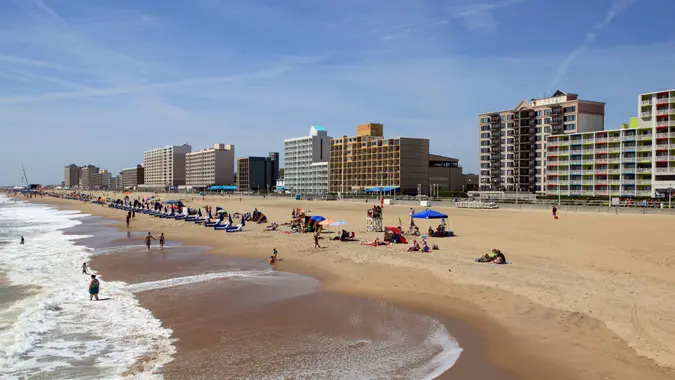Dave Ramsey’s Retirement Advice: Should You Pay Off Debt First or Build Emergency Savings? His Answer May Surprise You

Commitment to Our Readers
GOBankingRates' editorial team is committed to bringing you unbiased reviews and information. We use data-driven methodologies to evaluate financial products and services - our reviews and ratings are not influenced by advertisers. You can read more about our editorial guidelines and our products and services review methodology.

20 Years
Helping You Live Richer

Reviewed
by Experts

Trusted by
Millions of Readers
Striking a balance between paying off debt and building savings can be a good approach to addressing your retirement savings concerns, by allocating a portion of your budget to both goals simultaneously. For example, you might direct a larger portion toward high-interest debt while still contributing a smaller amount to your emergency fund.
Most financial experts advise a piecemeal approach, however — jumping one financial hurdle at a time. While some specialists suggest putting all your extra cash toward paying off debt first, most stress the importance of having money set aside in an emergency fund, especially when the economy and job security are weighing on people’s minds.
For Dave Ramsey, financial guru and popular radio personality, debt is the No. 1 obstacle to financial freedom and should be paid off before saving for the future. Kind of.
Although Ramsey gives priority to paying off debt as soon as possible, when one looks at his step-by-step plan for taking control of your finances, they see that before you eliminate outstanding debt it’s important to create a starter emergency fund.
The first three listings contained within Ramsey’s “7 Baby Steps” are as follows:
- Baby Step 1: Save $1,000 for your starter emergency fund.
- Baby Step 2: Pay off all debt (except the house) using the debt snowball.
- Baby Step 3: Save 3-6 months of expenses in a fully funded emergency fund.
Having some emergency savings can provide peace of mind and reduce financial stress. It can be emotionally beneficial to know you have a safety net in case of emergencies. Without one, you could end up spiralling further into debt when unforeseen situations arise.
Having an emergency savings fund is crucial to cover unexpected expenses like medical bills, car repairs or job loss. It’s generally recommended to have three to six months’ worth of living expenses saved up in an easily accessible account (some pros recommend six to nine months, given the current U.S. economic climate). However, Ramsey advises starting with just $1,000 before you confront your debt head-on.
Once you have your $1,000 starter emergency fund saved, you can get down to the business of paying off high-interest debts, like credit cards or payday loans, as soon as possible. The interest rates on these types of debt can be extremely high and can quickly accumulate, making it challenging to get ahead financially. According to Forbes Advisor’s weekly credit card rates report, the current average credit card interest rate is a staggering 24.69%.
With respect to paying down debts, you can dispose of them in a number of ways. Ramsey endorses the debt snowball method, which consists of listing all your debts, paying off the minimum amounts, throwing any money you can toward the smallest debt, then moving on to the second smallest debt before eliminating them all.
 Written by
Written by  Edited by
Edited by 

























